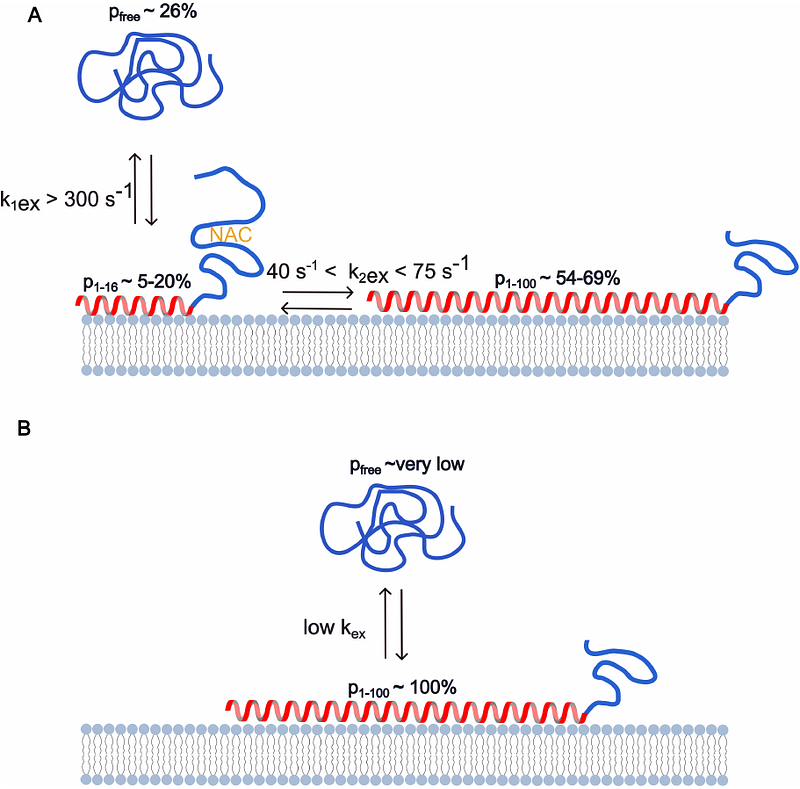Tipping point in α-synuclein-membrane interactions: stable protein-covered vesicles or amyloid aggregation

Tipping point in α-synuclein-membrane interactions: stable protein-covered vesicles or amyloid aggregation
Makasewicz, K.; Carlström, G.; Stenström, O.; Bernfur, K.; Fridolf, S.; Akke, M.; Linse, S.; Sparr, E.
Abstract-synuclein is a neuronal protein implicated in neurotransmitter release. Its function is thought to critically depend on the dynamic equilibrium between free and membrane-bound protein. -synuclein amyloid formation implicated in Parkinson\'s Disease was also shown to be modulated by lipid membranes. However, it remains elusive whether -synuclein-related pathology is due to loss-of-function or gain-of-toxic-function. To help address this question, we studied the coupling of the equilibrium between free and membrane-bound -synuclein and membrane-induced amyloid formation - phenomena that are usually treated separately. We present a description of the system on a wide range of length scales and timescales for lipid-to-protein ratio conditions where amyloid formation is either accelerated or inhibited by lipid membranes. We find a clear difference between the dynamics and heterogeneity of the protein-covered membrane interface in the two sets of conditions. In aggregation-accelerating conditions, the membrane interface is dynamic and heterogeneous with rapid exchange between free and membrane-bound protein, and disordered protein segments of varying lengths exposed to solution. All these characteristics of the membrane interface are likely to decrease the free energy barrier for amyloid formation. Conversely, the membrane interface is homogeneous and less dynamic in conditions where amyloid formation is inhibited. Importantly, any factors affecting the equilibrium between free and membrane-bound -synuclein may trigger a change from non-aggregating to aggregating conditions. Altogether, our results highlight a strong coupling of the dynamic equilibrium between the free and membrane-bound -synuclein and membrane-modulated amyloid formation and thus of the physiological function of -synuclein and its aberrant aggregation.
